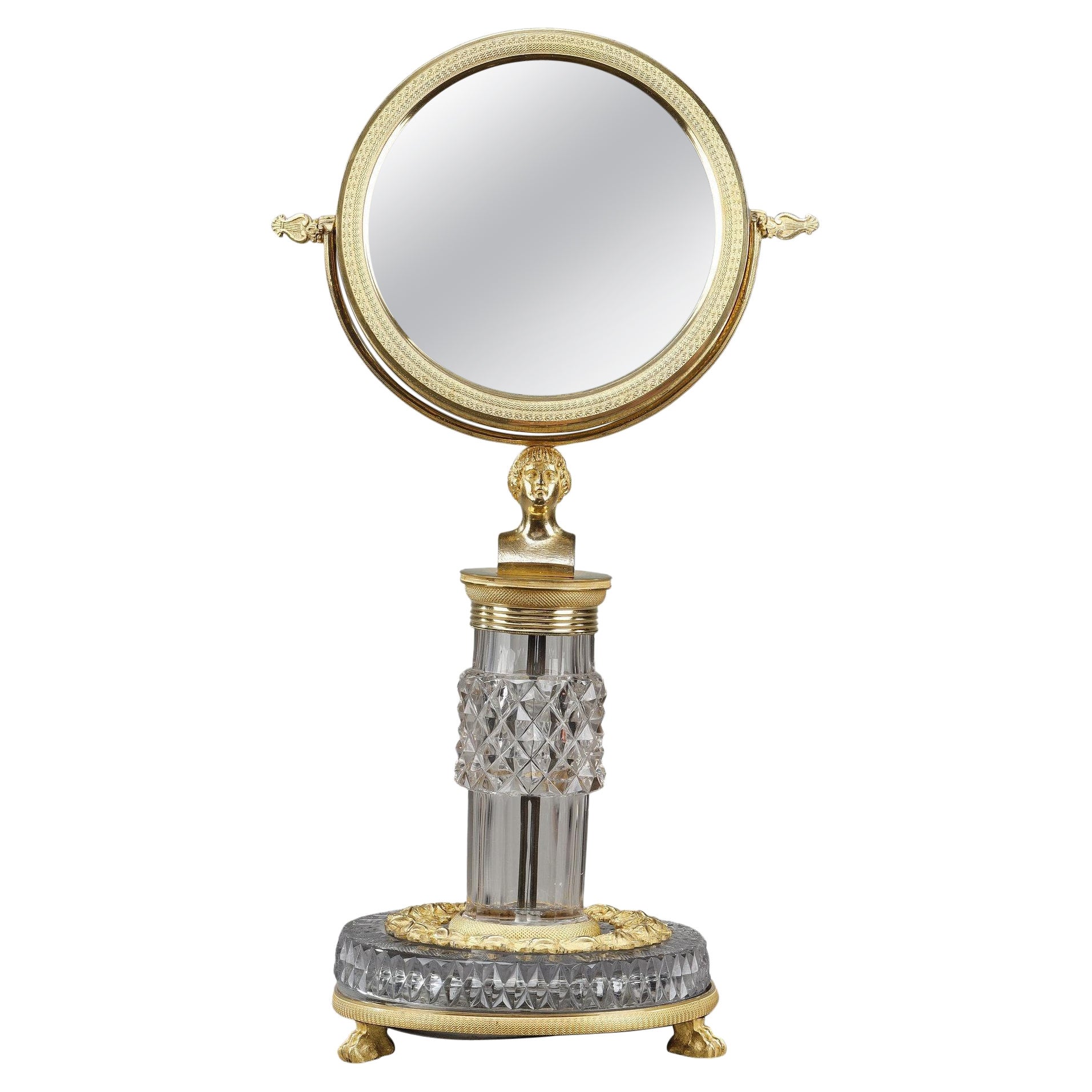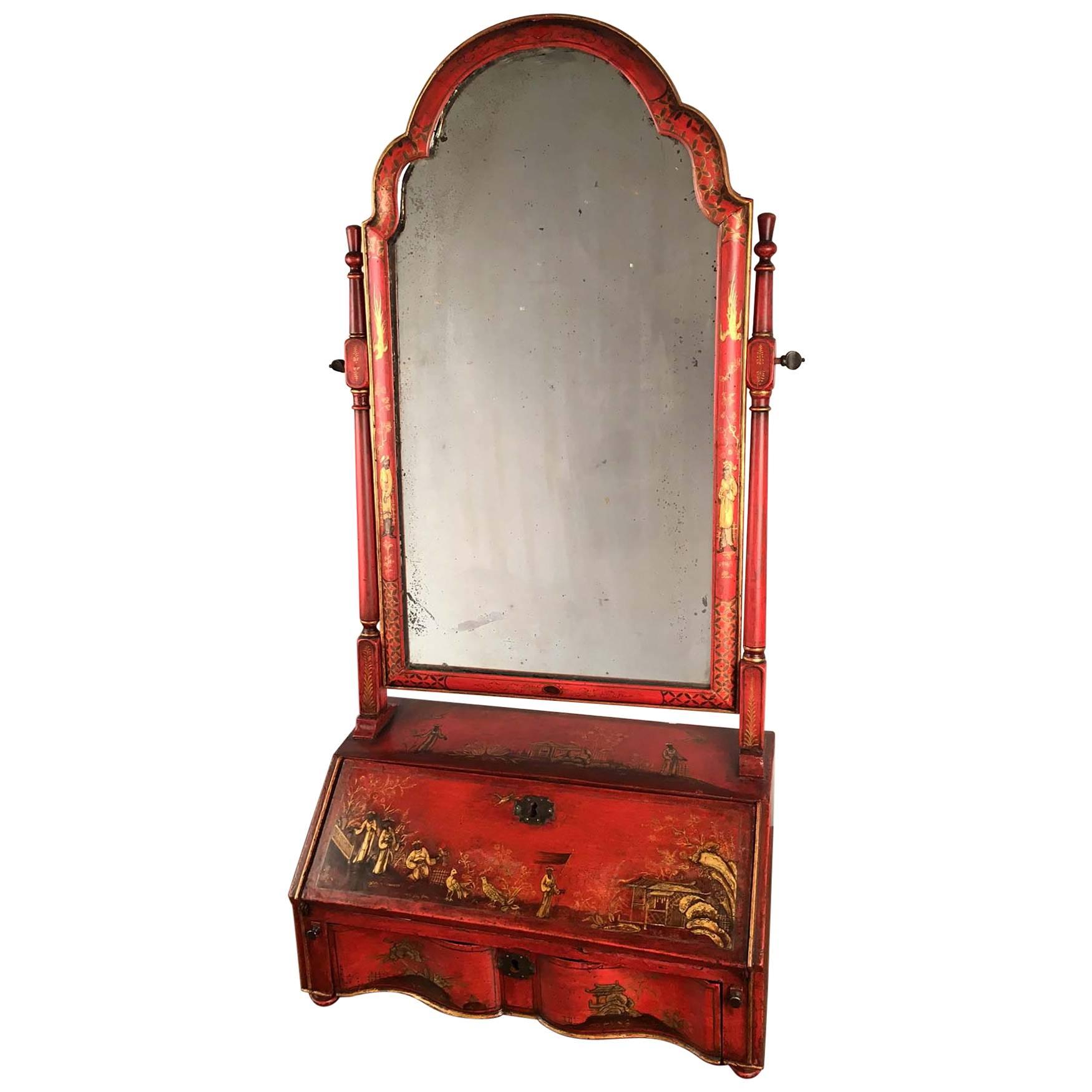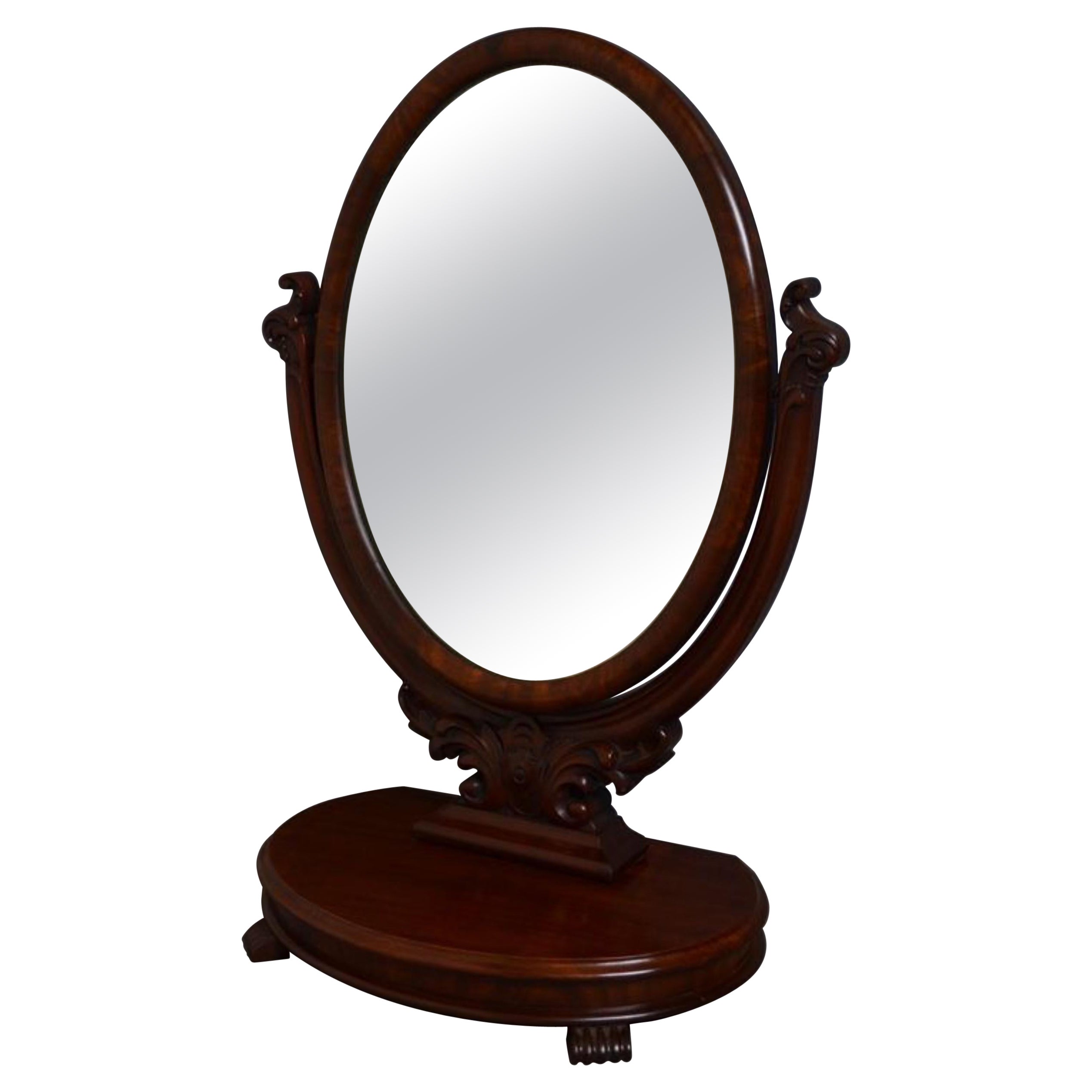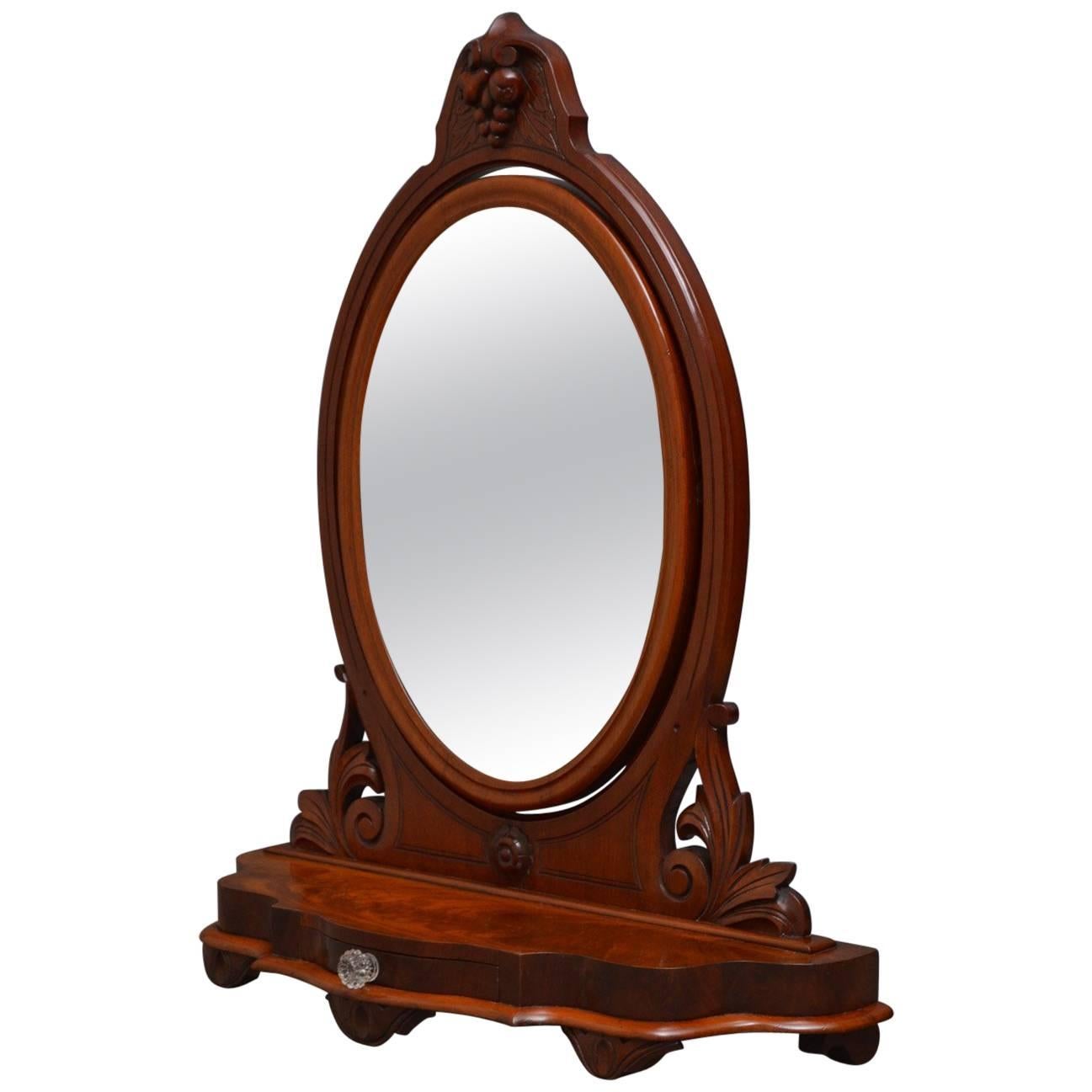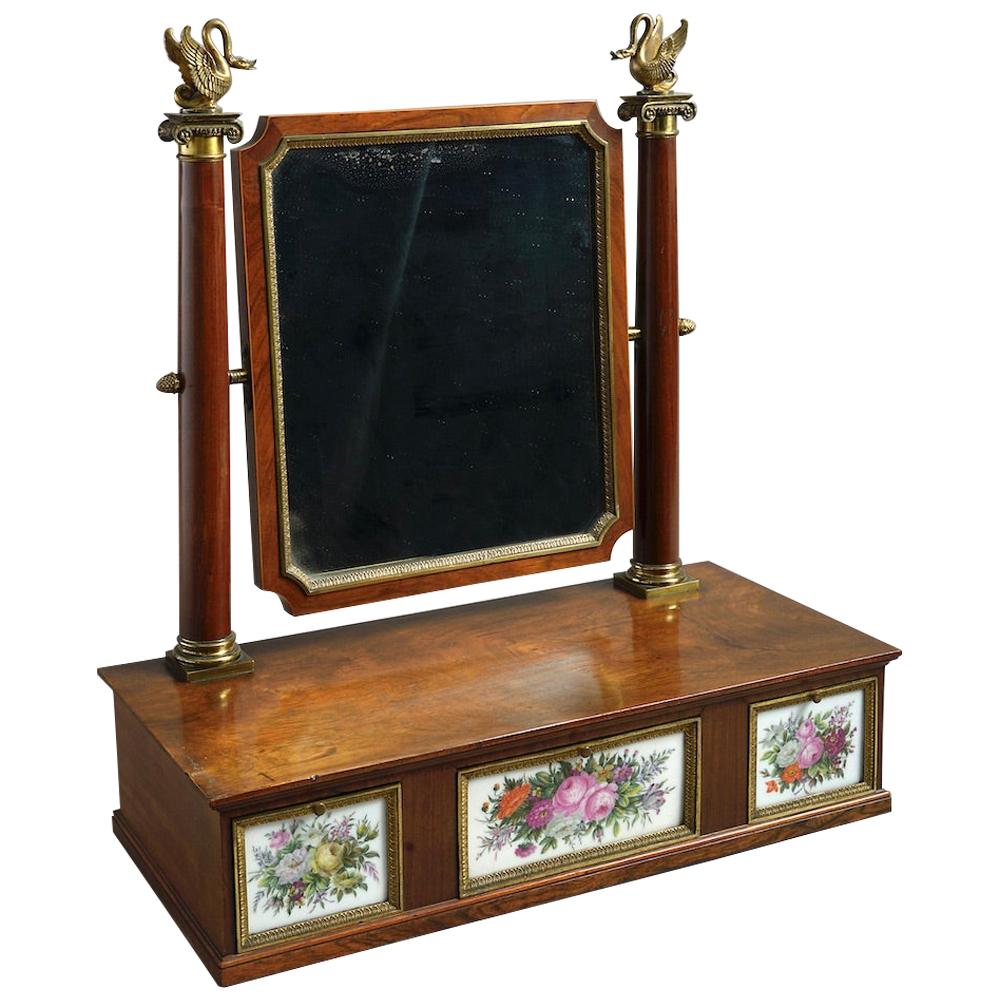Items Similar to Palais Royal Gilt Bronze and Mother of Pearl Toilet Mirror, circa 1850
Want more images or videos?
Request additional images or videos from the seller
1 of 8
Palais Royal Gilt Bronze and Mother of Pearl Toilet Mirror, circa 1850
About the Item
A Palais Royal gilt bronze and mother of pearl toilet mirror.
French, circa 1850.
A Palais Royal gilt bronze and mother of pearl toilet mirror, of Second Empire design with arched bevelled glass plate and inset with a portrait miniature of an Empress.
Signed Derval.
- Dimensions:Height: 10.63 in (27 cm)Width: 8.27 in (21 cm)Depth: 5.52 in (14 cm)
- Materials and Techniques:
- Place of Origin:
- Period:
- Date of Manufacture:circa 1850
- Condition:
- Seller Location:Brighton, GB
- Reference Number:
About the Seller
5.0
Recognized Seller
These prestigious sellers are industry leaders and represent the highest echelon for item quality and design.
Platinum Seller
These expertly vetted sellers are 1stDibs' most experienced sellers and are rated highest by our customers.
Established in 1964
1stDibs seller since 2014
48 sales on 1stDibs
Typical response time: 1 hour
Associations
The British Antique Dealers' AssociationLAPADA - The Association of Arts & Antiques Dealers
- ShippingRetrieving quote...Ships From: Brighton, United Kingdom
- Return PolicyA return for this item may be initiated within 7 days of delivery.
More From This SellerView All
- Impressive Napoleon III Gilt-Bronze and Ebony Bevelled Mirror, circa 1850Located in Brighton, West SussexA fine and impressive Napoleon III gilt bronze and ebony bevelled mirror. French, circa 1850. A fine and impressive Napoleon III gilt bronze and ebony bevelled mirror with cast...Category
Antique Mid-19th Century French Napoleon III Wall Mirrors
MaterialsBronze
- Empire Style Gilt Bronze-Mounted Green Granite Fireplace, circa 1850Located in Brighton, West SussexAn Empire style gilt bronze-mounted green granite fireplace. French, circa 1850. The fireplace has a rectangular mantel shelf above a frieze cent...Category
Antique Mid-19th Century French Empire Fireplaces and Mantels
MaterialsGranite, Bronze
- Louis XV Style Twelve-Light Rock Crystal and Gilt-Bronze Chandelier, circa 1850Located in Brighton, West SussexAn Important Louis XV style twelve-light rock crystal and gilt-bronze chandelier. French, circa 1850. An important Louis XV style twelve-light rock crystal and gilt-bronze chandelier, surmounted by a floral corona, issuing six scrolling branches, each terminating with three circular drip pans and nozzles, decorated all over with drops, grapes, apples and baluster shaped shades. The etymology of the word "crystal" has its origins in the Ancient Greek word for ice ‘krystallos’. Rock crystal which is always cool to the touch they considered to be ice permanently frozen by the Gods. For thousands of years Rock crystal has been prized for its beauty and remarkable ability to refract light. When cut and polished, the inherent striations and inclusions of the crystal create a refracted light richer in luminosity than that of manmade crystal or glass. These properties have made it highly desirable throughout history; its scarcity ensuring its use was limited to all but the most luxurious of decorative items. Rock crystal is in reality a natural quartz, pure monocrystals of siliceous oxide. A material of exceptional hardness with indices of light refraction close to that of a diamond, quartz has been mined and worked since antiquity. In the Middle Ages, this rare material was used almost exclusively on religious objects. A prohibitively expensive material, Cristal de roche was first mined in France in small quantities in the 17th century and its rarity forced artisans to innovate. The imitation of crystal began in Venice in the 15th century - the art of the glassmaker being to recreate the limpidity and luminosity of rock crystal. To do this, the glassmakers invented a 'crystal' made in reality of glass combined with a mixture of potassium, silicon, manganese and lead oxide heated to between 1200 and 1500 degrees. This crystal imitated rock crystal, although it displays a metallic colouring. This crystal de roche should not be confused with what is now called crystal. The latter was a development of 18th century Bohemia and, subsequently France with the Manufacture Royale de cristaux. Rock crystal first appears as small beads on candelabras and chandeliers - not yet called lustres - in the 17th century. At the beginning of the 18th century the discovery of new seams in Central Europe allowed the mining of larger blocks of crystal, which could in turn be worked into pyramids, drops and stars. The highest value was historically based, like diamonds, on two things - the weight and the clarity or limpidity of the crystal. The clearer the better, hence the phrase d'une très belle eau when referring to crystal. Perhaps the earliest recorded-reference in France is in 1697, when Louis XIV offered twelve grand 'lustres' in 'cristal de roche' to the King of Siam. Louis XV also possessed a chandelier with twelve branches in his chambre a coucher at Versailles which had been delivered by Delaroue and Slodtz. This was commented on by the duc de Luynes: 'on a mis dans la chambre du roi, un chandelier en cristal de roche d...Category
Antique Mid-19th Century French Louis XV Chandeliers and Pendants
MaterialsBronze
- Patinated Bronze and Sienna Marble Fireplace of Palatial Proportions, circa 1850Located in Brighton, West SussexA highly important patinated bronze and Sienna marble fireplace of palatial proportions with finely cast bronze panels and classical figures depicting 'Printemps' and 'Automne'. French, circa 1850. This magnificent Fireplace...Category
Antique Mid-19th Century French Fireplaces and Mantels
MaterialsMarble, Bronze
- Empire Gilt and Patinated Bronze Mounted Mahogany Cheval Mirror, circa 1820Located in Brighton, West SussexA very fine Empire gilt and patinated bronze mounted mahogany cheval mirror or 'Psyché'. French, circa 1820. This fine Empire style mahogany cheval mirror or 'Psyché' is of e...Category
Antique Early 19th Century French Empire Floor Mirrors and Full-Length M...
MaterialsBronze
- Pair of Bronze Figural Candelabra by Charles Cumberworth, circa 1850Located in Brighton, West SussexA pair of gilt and patinated bronze figural candelabra by Charles Cumberworth. French, circa 1850. Signed 'C. Cumberworth'. This Fine pa...Category
Antique Late 19th Century French Candelabras
MaterialsBronze
You May Also Like
- Charles X cut crystal and gilt bronze toilet mirrorLocated in Paris, FRCharles X toilet mirror in cut crystal and gilt bronze. The circular mirror with its guilloché border is mounted on a rotating system attached to a diamond-tipped crystal shaft. The ...Category
Antique 1820s French Charles X Table Mirrors
MaterialsCrystal, Bronze
- George 1 Red Japanned and Gilt Toilet MirrorLocated in Montreal, QCA George I red japanned and gilt toilet mirror, the period plate in double arched and ovalo frame, the stand with fall front and fitted interior above a single shaped drawer en arbal...Category
Antique 1720s English George I Table Mirrors
MaterialsLacquer
- Victorian Toilet MirrorLocated in Whaley Bridge, GBFine quality and very elegant, Victorian, mahogany toilet mirror with original oval plate, having carved supports and attractive figured mahogan...Category
Antique 19th Century Table Mirrors
MaterialsMahogany
- French Gilt Bronze Table Mirror, circa 1875Located in New York, NYFrench gilt bronze table mirror, circa 1875.Category
Antique 1870s Table Mirrors
MaterialsBronze
- Victorian Mahogany Toilet MirrorLocated in Whaley Bridge, GBSn4165 Victorian, mahogany toilet mirror with original oval plate, having carved supports and attractive figured mahogany base, standing on carv...Category
Antique 1870s Great Britain (UK) Victorian Table Mirrors
MaterialsMahogany
- Charles X Rosewood Toilet MirrorLocated in London, GBA Charles X Paris porcelain and ormolu-mounted rosewood toilet mirror, circa 1820.Category
Antique 19th Century Table Mirrors
MaterialsOrmolu
Recently Viewed
View AllMore Ways To Browse
Antique Mirror French
Antique Mirrors French
Empire Design
Mother Of Pearl French
Gold Table Mirror
Gold Mirror Table
Bronze Antique Mirrors Bronze Mirrors
Gilt Mirrored Table
Mother Of Pearl Table
1850 Mirror
Pearl Mirror
Bronze French Table Mirror
Bronze Gilt Mirror
Mirror With Pearls
Bronze Mid Century Mirror
Antique Mother Of Pearl Table
Of 19th Century Bronze Mirrors
Gold Mirror Glass Table
